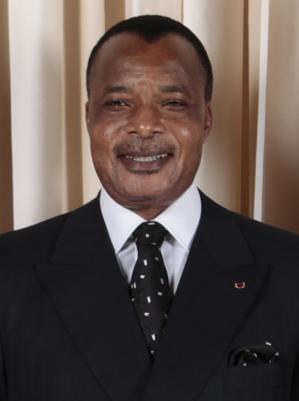By: Aaron Hemstock
What is the Congo Civil War?
Sassou Nguesso and his supporters were tired of the way Pascal Lissouba was ruling The Republic of Congo, and wanted a change. In order to do that, they needed to take over the government with force. In 1997, Sassou Nguesso and his followers overthrew Pascal Lissouba’s Government, and took control of the Republic of Congo (BBC). Because of this, Lissouba and his supporters became furious and he led them to an up-rise opposing Nguesso and his new government, bringing a Civil War to The Republic of Congo.
 |
| Sassou Nguesso http://upload.wikimedia.org/wikipedia/commons/a/a2/Sassou-Nguesso.jpg |
 |
| Pascal Lissouba http://news.bbc.co.uk/olmedia/1730000/images/_1731964_lissouba300.jpg |
How was Military Force Used?
With the help of Angolan Troops, former military officer Dennis Sassou Nguesso took over control of Congo in October of 1997 (BBC). During the Civil war Lissouba used many of his military resources; like calling in multiple helicopters driven by foreign mercenaries, that shot down and bombed destinations controlled by the Cobra Militia, who was a group fighting for Nguesso (Pike, John). After Nguesso took power, he had the Cobra Militia complete house-to-house searches for any of the government forces or private militia, who worked under Lissouba, killing many of them and looting their homes (Pike, John). During the rest of Nguesso’s rule, the Cobra Militia acted as his private security force, capturing and in many cases killing off his opponents in politics. This gave him the edge at elections so that he could win (BBC). Angolan troops also helped out Nguesso in his conquest to gain complete control. The soldiers that worked for Nguesso were very brutal, dangerous, and merciless while fighting for control, making life difficult for all the citizens affected by the War.
 |
| Angolan Troops http://www.pbs.org/wnet/wideangle/episodes/aids-warriors/photo-essay-a-nation-in-crisis/1300/ |
 |
| Ninja Militia http://allthings.bryanmealer.com/ch3/4.jpg |
Life for the People
Life for the people of Congo was terrible during the Civil War. They had to deal with constant fighting, and live in fear every day; being aware that anything could happen in an instant. Because of the war, many of the countries’ citizens were left vulnerable and possible victims to many dangers. An estimated six million people died as a result of the conflict, hunger, and disease since 1998 when the Civil War broke out (Merlin). Many of the people were displaced and had to move far away from their homes in order to stay safe from all the dangers around them. After the war, the average life expectancy has become 46 and 72 percent of the population is undernourished (Merlin). Now, there are many organizations dedicated in helping the people of Congo recover and get back on their feet as a country (Merlin).
 |
| Citizen in Congo, Covering a Dead Body http://blogs.reuters.com/global/tag/aid/ |
What Caused the Start of the War?
The war broke out in a big way due to the countries off-shore oil wealth, which served as a big motivation for the warlords fighting to take control (BBC). The country mostly split up into geographic lines; Northern officers joining Nguesso, while the rebels from the South joined Lissouba (BBC). The country was a mess as it started to split apart in two; with both sides fighting brutally, trying to gain the upper hand. The fighting mainly began because of Nguesso’s win in the election. His win caused Lissouba and his supporters to become furious because under the rule of Nguesso, Lissouba had no power in what he believed in. Not having the power meant that Lissouba couldn’t control the country the way he wanted to anymore, which is why he fought back.
End Result…
By the end of 1999 the rebels began to lose key positions to Nguesso’s troops which led to a peace treaty being signed (BBC). In 2002 Sassou Nguesso won the elections again, but was not opposed by anyone in the elections (BBC). He was not opposed because the other runners were banned from the competition (Pike, John). Later that year in March, the Ninja Militia led by the former prime minister, and renegade priest, Pastor Ntumi, started to fight against Nguesso’s government trying to overthrow him (BBC). This fighting brought the second civil war to Congo. One year later a peace treaty was signed, and the fighting was stopped; allowing Sassou Nguesso to take back control of the country (BBC).
 |
| Republic of Congo National Flag http://www.appliedlanguage.com/flags_of_the_world/flag_of_congo_republic_of_the.shtml |
Citations
Pike, John. "Republic of Congo Civil War." GlobalSecurity.org - Reliable Security Information. Global Security, 11 July 2011. Web. 03 Oct. 2011. <http://www.globalsecurity.org/military/world/war/congo-b.htm>.
BBC. "BBC News - Timeline: Republic of Congo." BBC News - Home. BBC, 4 May 2011. Web. 03 Oct. 2011. <http://news.bbc.co.uk/2/hi/africa/country_profiles/1076836.stm>.
BBC. "BBC News - Republic of Congo Profile." BBC - Homepage. BBC News, 19 July 2011. Web. 03 Oct. 2011. <http://www.bbc.co.uk/news/world-africa-14121191>.
Merlin. "Democratic Republic of Congo." Merlin. Global Fund. Web. 25 Oct. 2011. http://www.merlinusa.org/where-we-work/congo/?_kk=life%20in%20the%20congo&_kt=365161eb-640f-4c15-bb5e-0dd2498a9e6e&gclid=CIHcjJ233qsCFYoDQAodoG6eSQ.
No comments:
Post a Comment